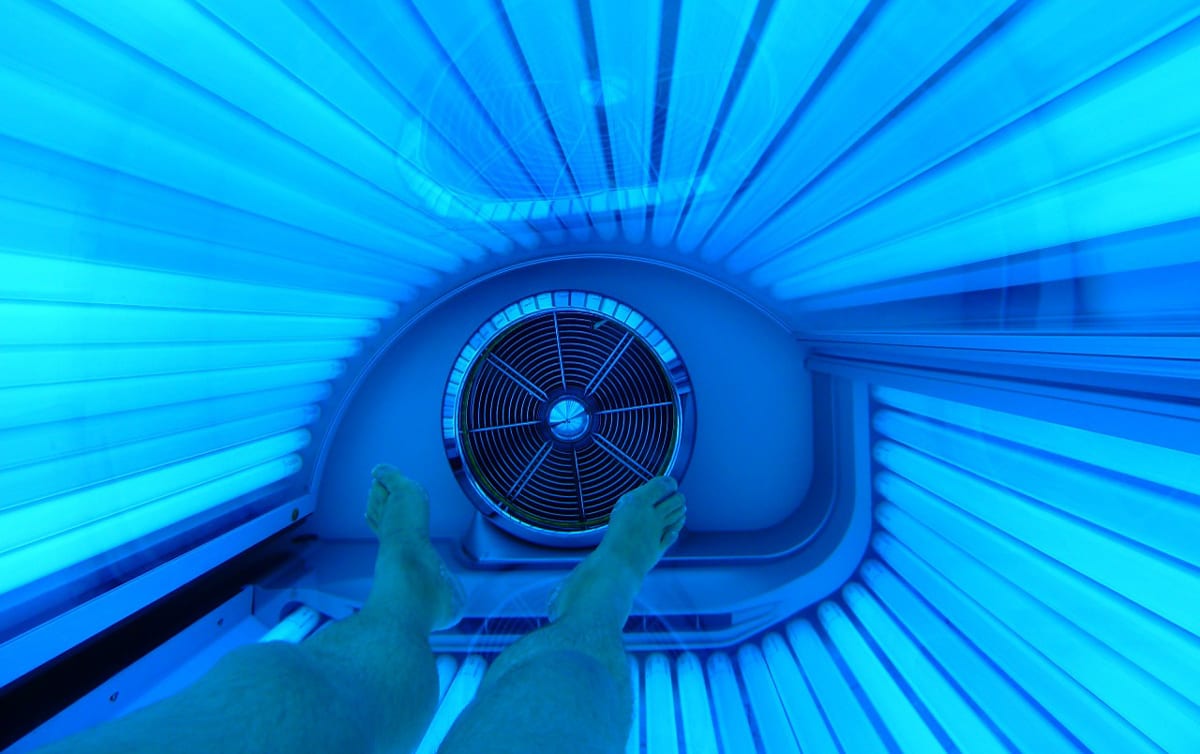
Young women looking for a healthy glow
should not turn to indoor tanning
By Ali Venosa
With spring on the horizon, many women may be tempted to visit the tanning salon in an effort to banish pale winter skin. However, those hoping for a “healthy glow” should be aware that indoor tanning causes severe damage to the skin’s DNA, upping their chances of skin cancer and premature skin aging. There is no such thing as a healthy tan achieved by unprotected exposure to ultraviolet rays.
The International Agency for Research on Cancer, an affiliate of the World Health Organization, includes UV tanning devices in its Group 1, a list of agents that are cancer-causing to humans. Using indoor tanning beds is one of the quickest ways to increase your chances of developing melanoma, one of the most dangerous forms of skin cancer. This is especially true for those who begin indoor tanning at a young age. People who first use a tanning bed before age 35 increase their risk for melanoma by 75 percent, and one study observing 63 women diagnosed with melanoma before age 30 found that 61 of them (97 percent) had used tanning beds.
UV tanning devices can also wreak havoc on the skin’s appearance. “Aside from significantly increasing your risk of developing skin cancer, indoor tanning can contribute to premature skin aging,” says Dr. Deborah S. Sarnoff, president of The Skin Cancer Foundation. “Using UV tanning beds can lead to fine lines, wrinkles, sagging and brown spots down the line.”
The best alternative to ultraviolet tanning devices is to embrace your natural skin tone. By staying hydrated, exercising, and incorporating healthy foods into your everyday diet, skin can look and feel great — achieving a truly healthy glow without a tan. But if you’re committed to achieving bronzed skin, there are plenty of sunless alternatives to UV tanning devices that can give you the look you desire without the skin damage.
Spray tans and sunless self-tanning moisturizers, sprays, and towelettes can all help women achieve a tanned look in a safe way. The active ingredient in most sunless tanners is the coloring agent DHA (dihydroxyacetone), which combines with amino acids in the skin. The resulting reaction causes browning, but unlike the reaction caused by UV rays, it involves only the outermost, dead cell layer of the skin.
It’s important to remember that a faux tan does not provide any sun protection, however. A proper sun protection regimen — whether you’re rocking your natural skin tone or a self-tanner —includes seeking shade, daily application of a broad-spectrum sunscreen with an SPF of 15 or higher and covering up with clothing, including a broad-brimmed hat and UV-blocking sunglasses. If you’re going to be out for an extended period in the sun, use an SPF 30 or higher, broad-spectrum, water-resistant sunscreen.
Viewpoints and perspectives expressed throughout The Independent are those of the individual contributors. They do not necessarily reflect those held by the staff of The Independent or our advertising sponsors. Your comments, rebuttals, and contributions are welcome in accordance with our Terms of Service. Please be respectful and abide by our Community Rules. If you have privacy concerns you can view our Privacy Policy here. Thank you!
Click here to submit an article, guest opinion piece, or a Letter to the Editor

Letter to the editor: Oxybenzone sunscreens do not prevent cancer




Be sure to give all the research on tanning beds and outdoor tanning. Here are some things you should know:
In listing the ways to get vitamin D, you forgot to mention sunbeds (tanning beds). The best way to obtain vitamin D in winter is to use a sunbed. In addition, you derive many healthful benefits. People in Canada who regularly use tanning beds have optimal vitamin D levels–levels that are higher than typical Canadian citizens have. Sunbed users also have far stronger bones than people who do not use them. In addition, vitamin D produced by sunbeds will never be toxic, because the body automatically adjusts production. Sunbeds’ other healthful qualities:
• Sunbed use is associated to lower breast-cancer risk.
• Sunbed use can cure psoriasis and eczema.
• Sunbed use is associated with a 40-50% reduced risk of endometrial cancer.
•Sunbed use reduces pain.
• Sunbed use improves mood.
•Sunbed use is associated with a reduced risk of clots.
•Sunbeds can also help to build a protective tan, which prevents sun damage during sunny vacations. To learn more: and to read all of the scientific documentation regarding sunbeds and sun exposure, visit sunlightinstitute.org and read Dr. Marc Sorenson’s book, Embrace the Sun.
Thank you for your comments Marc, if you’d like to submit a followup or rebuttal you can email us at editor@infowest.com or go to this page on our site https://suindependent.com/submit-an-article/